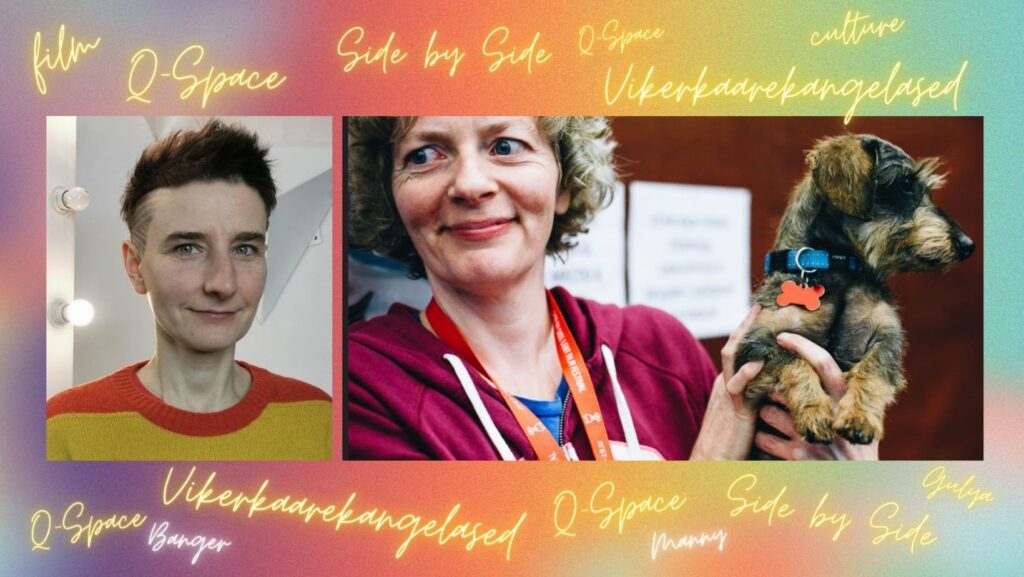How to organise communities of color? Interwiev with Monica Gathuo
In Estonia the voices of people of color are often missing from conversations about racism. Also the most visible part of antiracist politics is led by the white majority. In Finland the situation seems different – there is a lot of self-organisation happening in communities of color which are also key actors in antiracist activism. The conversation with Monica Gathuo focuses on community organising as an important tool for empowerment and activism.
Monica Gathuo is activist media worker. She is co-initiator of Anti-Racism Media Activism Alliance. ARMA combines the tools of research, activism and art in order to create more awareness against racism in Finland. ARMA is led by black and brown people. In 2017-2018 she was creating and editing contents for the online platform Ruskeat Tytöt.
To me it seems that many communities of color have become more active and visible in Finland in recent years, for example Afro-Finnish, refugee and migrant communities. Do you agree with that observation or is it just an impression from distance?
Finland has never been completely white and will never be completely white, there have always been people and communities of color in this country. For example the Sámi who are indigenous and the Roma who have lived here for roughly 500 years.
Event’s language is English. Moderator Airi Triisberg
But it is true that in the recent years there has been more community organising, particularly in Helsinki. People of color have started to come together in order to form a more collective project. Some influential events in that process were the creation of the POC Helsinki Facebook group in 2015 and Koko Hubara’s blog in 2015, as well as her book Ruskeat Tytöt (Brown Girls) in 2017.
It is very difficult to translate the term “person of color” into Estonian language. One possible translation would be through negative definition, such as “non-white”. But even that term is relative, because whiteness is constructed differently in various contexts. The second difficulty is connected to the association with skin color – a “person of color” is not necessarily dark-skinned, because light-skinned people are also racialised in some societies. For example only 100 years ago, prominent European “race scientists” were convinced that Finns and Estonians are not part of the white European race.
When we talk about people of color in Finland, we talk about a very broad spectrum of subject positions and experiences. This term includes both indigenous communities such as Sámi as well as diasporic and migrant communities from all continents. Some people of color in Finland are migrants whereas some were born in Finland. Some communities have a long history in Finland whereas others have lived there for a few generations. How are these different communities interacting and supporting each other?
Solidarity between different communities of color in Finland varies. There is more separation in the older generations who tend to stay with their own communities. The younger generations are mixing quite a lot, especially the ones with immigration background. One important issue is language. Migrants who use another language than Finnish are excluded from many activities – that needs to be rethought in our community organizing, we need to accommodate them as well. With the youth it is very different. For example young people have created a slang which is not grammatically perfect Finnish but a language of their own.
The common struggle must be the key factor for community organizing, but not everyone recognizes the intersectionality of struggles. Some persons of colour who speak up in public insist that we should be thankful, claiming that “it must be worse from where you came from, since you are here and Finland is so good to us”. Such statements are dividing the community into those who want more equality and those who want to lay low.
The communities of color also need allies. In the last elections this spring, there were a good handful of POC candidates, but only two of them were elected.
Which strategies have been useful in bringing together communities of color in Finland?
The key strategy is the creation of spaces and programmes that are created by and for people of color. We need to remember that the Sámi and Roma have been holding their own community activities for a long time, so it is not the first time that such organising is happening in Finland. But for the African diasporic community coming together in one room has been new and healing.
Artists and cultural workers have been very vital in creating spaces that are led by and for people of colour. Artists are used to creating spaces of their own, they have the tools and means for it. For example Museum of Impossible Forms has been an important inspiration.
At the same time, the far right trolls have made it a little scary to assemble, they seem to be following most of the public events happening in our community.
What role does feminism play in the context of organising communities of color in Finland?
Since these communities are different, they don’t all operate from feminist understanding. A good example of a feminist initiative, is Museum of Impossible Forms. They engage with a very wide audience, including many women and queers of color. The Sámi have created their own Pride in the North of Finland. There are some active individuals in Turku, especially in the gender studies department of Åbo Akademi University, and in Tampere. Academic scholars are trying to break the whiteness by bringing more persons of color into the institutions. Activists are creating spaces where people and communities of color can organize activities by themselves. Thus the operative mode depends on the context.










